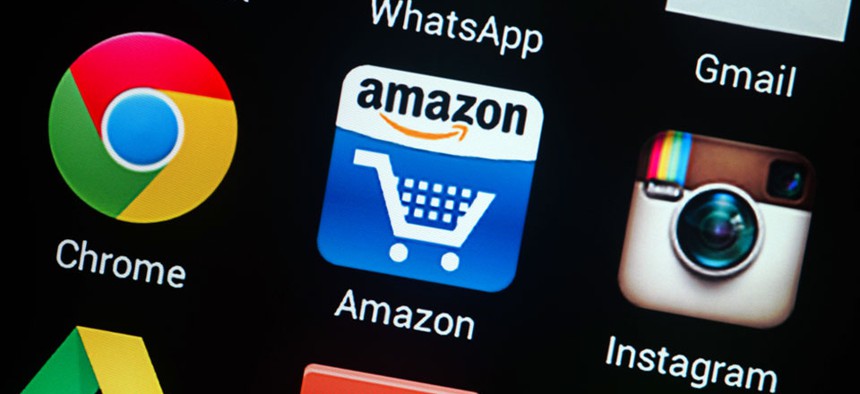The Amazon Button Isn't an April Fools' Joke

This goes way beyond an app. Alexander Supertramp/Shutterstock.com
Designed to correlate with specific products around your house, it's basically a physical manifestation of the one-click-to-buy feature on Amazon's site.
"It's not even April 1," a spokeswoman for Amazon told me this afternoon when I asked her to promise—legit, guarantee, pinky-swear promise—that the tech giant's Dash Button is a real product and not an April Fools' joke. She promised.
"I guarantee you," said Kinley Pearsall, one of three people who confirmed as much. "It is real."
The button, designed to correlate with specific products around your house like paper towels and laundry detergent and Gatorade, is basically a physical manifestation of the one-click-to-buy feature on Amazon's site. You stick the buttons around the house—near the coffee maker, or in the pantry—and when you run out of one of your staples, you press it to wirelessly reorder that item.
Amazon is partnering with 18 brands like Tide and Huggies—along with four connected-device partners (like Whirpool and Brita) that are working on technologies that might eventually enable your machines to re-order products for you.
"If this is a hoax," Pearsall told me, "I have been working for a long time on a product that's not real."
These are weird and wonderful times in technology. The line between innovation and absurdity is thin. What's possible is, very often, incredible. Which helps explain why, while I was confidently telling my colleagues the Dash Button was almost certainly baloney, many of them were telling me how they hoped I was wrong. ("Really, really hope this isn't a prank," one chatted. "I'd def use them.")
Is pressing a button easier than using one-click buying from a smartphone app? I guess so, actually. People don't always want to pull out their smartphone right after using the last paper towel on the roll. And everybody knows what it's like to resolve to remember—but forget anyway—the item you need most on your grocery list.
As far as modern conveniences go, the Dash Button potentially introduces a level of wireless integration that seems not unlike the glancification promised by the Apple Watch: a device not for telling time, but for telling you when to pull your iPhone out of your pocket.
There are still lots of questions. How do these buttons even work?
According to Amazon, you set up Dash buttons one time by linking them to your Amazon Prime account and your wireless network; when the button is pressed it sends a signal to the cloud and updates your order. When the order goes through, a light blinks so you know it worked. The whole transaction takes about eight seconds and you have about 30 minutes to cancel your order if you change your mind.
To avoid duplicate orders, Amazon won't process more than one press of a button per shipment—unless you specify otherwise in your account settings. The buttons are free (in beta, by invitation only) and Amazon tells me that they'll cover the cost of recycling the buttons by providing prepaid envelopes for returns. The battery life, Amazon says, will last for years.
They won't share how many of these things they expect to make, or how widely they hope Dash Buttons will be adopted.
"We will continue to iterate and evolve the program," Pearsall said. "There are a lot of customers that this is going to make a lot of sense for."
NEXT STORY: 'A tale of two contracting methods'


